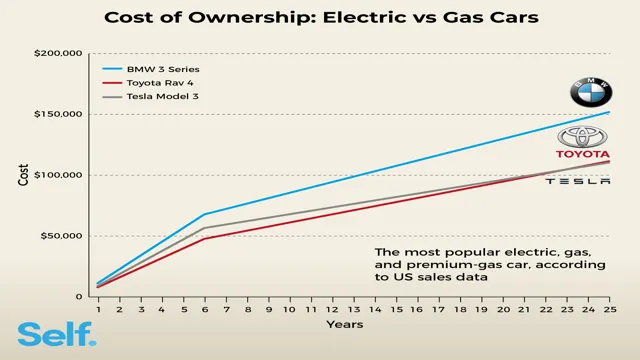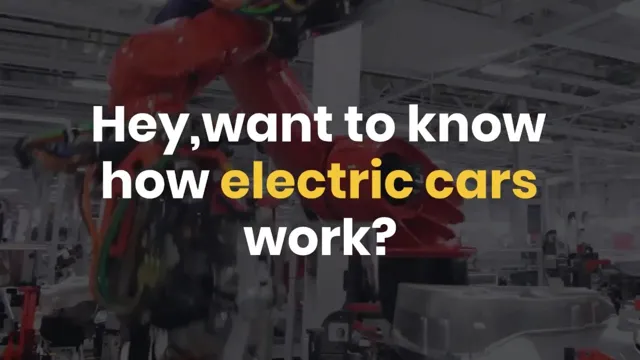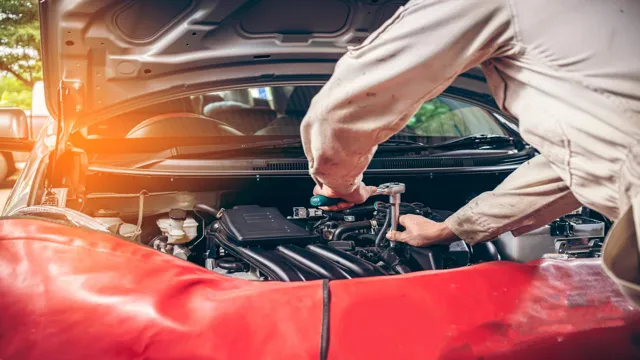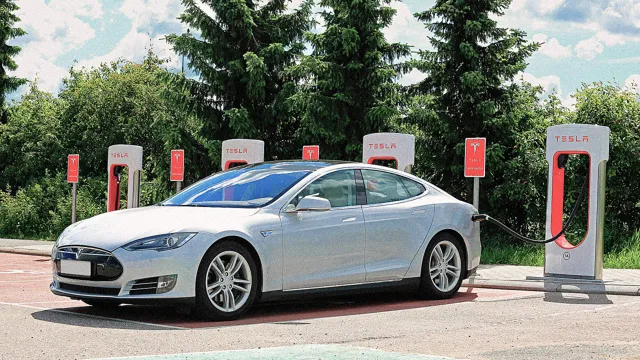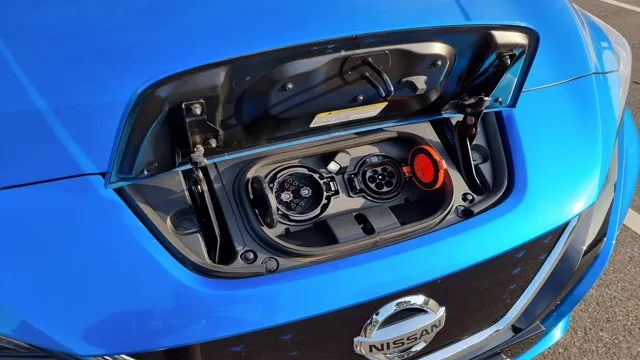Electric Car Ownership Revealed: Annual Costs You Need to Know!
Have you ever considered switching to an electric car but hesitated because of the potential maintenance costs? You’re not alone. Many people fear that the initial investment in an electric vehicle could quickly add up with repair bills and replacement parts. However, the reality is quite different.
In fact, electric cars have been proven to have lower maintenance expenses in the long run compared to traditional gas cars. So, if you’re ready to leave behind the gas pump and join the electric revolution, read on to learn more about the maintenance costs of electric cars and why they may be a smart choice for your wallet and the environment.
Average Annual Costs
If you’re thinking about purchasing an electric car, you might be curious about the average annual costs to maintain one. Firstly, it’s important to note that electric cars have lower operating costs compared to gas-powered cars. This is because electricity is typically cheaper than gasoline and electric cars require less maintenance due to fewer moving parts.
On average, the annual cost to maintain an electric car ranges from $400 to $700. This includes the cost of annual inspections, tire rotations, brake pad replacements, and other routine maintenance procedures. However, it’s important to keep in mind that the cost of maintaining an electric car will vary depending on the make and model of the car, as well as how often you use it.
But overall, owning an electric car can save you money in the long run while also reducing your carbon footprint.
Battery Maintenance
Battery maintenance is a crucial aspect of owning a vehicle. Not only does it ensure that your car starts every time you turn the ignition, but it can also save you money in the long run. The average annual cost of maintaining a battery is around $50 to $200.
However, neglecting battery maintenance can lead to a dead battery, which can cost around $150 to replace. Regularly checking the battery’s water level, performing a load test, and keeping its terminals clean can help extend its lifespan and save you money in the long run. Think of it like taking care of your own body – regular exercise and a balanced diet can lead to better health, which can save you money on medical bills down the road.
Similarly, taking care of your car’s battery can lead to a longer lifespan and save you money in the end.
Tire Replacement
Tire replacement can be a costly expense for car owners. On average, the cost of replacing tires can range from $500 to $1,000 per year, depending on the make and model of the vehicle and the type of tires needed. However, it is important to note that the cost of tire replacement can vary depending on several factors such as the type of tire needed, the quality of the tire, and location.
For instance, if you live in an area that experiences harsh weather conditions, you may need to purchase special tires that are designed to handle these conditions. Similarly, if you drive a high-performance vehicle, you may need to invest in specialized tires designed to handle the power and speed of your car. To save money on tire replacement, it is important to maintain your tires properly, rotate them regularly, and invest in high-quality tires that are designed to last.
By doing these simple things, you can reduce the frequency of tire replacements and keep your car running smoothly without breaking the bank.
Brake Maintenance
Brake maintenance is an essential part of car ownership, and it’s critical to consider the average annual costs of maintaining yours. The amount you’ll need to spend on brake maintenance will vary depending on several factors, such as how often you use your vehicle and the type of brake system you have. On average, though, you can expect to spend around $250-$500 per year on brake maintenance.
This includes basic services like brake pad replacement, brake fluid changes, and rotor resurfacing. However, if your brakes need more extensive repairs, such as replacing brake lines or calipers, the cost can rise significantly. It’s important to remember that investing in regular brake maintenance can actually save you money in the long run by preventing more expensive damage to your vehicle.
So, if you notice any warning signs of brake problems, such as squeaking or grinding sounds, don’t hesitate to get them checked out by a professional. It’s always better to be safe than sorry when it comes to brake maintenance!
Factors That Affect Costs
When it comes to electric cars, many people wonder about the annual maintenance costs. While electric vehicles generally require less maintenance than traditional cars, there are still factors that can affect the cost of maintaining an electric car. The battery is a major component of an electric vehicle and will need to be replaced eventually, which can be an expensive cost.
Additionally, the cost of electricity in your area will impact your charging costs. Some areas have higher electricity prices than others, which will affect the amount you pay to charge your car. Maintenance costs will also vary depending on the make and model of your vehicle.
Luxury electric cars may have higher maintenance costs due to specialized parts or services. To keep costs low, it’s important to compare maintenance costs for different electric vehicles and consider the cost of battery replacement when making a purchase. Overall, maintenance costs for an electric car will depend on a variety of factors and it’s important to do research before making a purchase.
Driving Habits
Driving is an essential part of our daily routine, but it also affects our auto insurance rates. Several factors can directly impact the cost of insurance premiums, including your driving habits. Reckless driving, such as speeding, running red lights, and reckless lane-changing, can significantly increase the chance of an accident, and as a result, it can raise your insurance rates.
Your driving history matters too. If you have a history of frequent accidents or traffic citations, you may pay more for insurance than someone with a clean driving record. On the other hand, demonstrating a good driving record can potentially reduce your insurance costs.
It’s also important to note that your vehicle’s make and model, location, and annual mileage can affect auto insurance rates. To get the most affordable auto insurance, practice safe driving, maintain a clean driving record, and consider choosing a car with a good safety record and lower price range.
Location and Climate
When it comes to building a home or any structure, the location and climate are significant factors that can affect costs. Building in areas with extreme weather conditions, such as hurricanes, earthquakes, or tornadoes, will require more expensive materials and additional reinforcements to ensure the safety and durability of the structure. Additionally, the cost of obtaining building permits and adhering to local building codes can vary greatly depending on the location.
For instance, building in a busy metropolitan area with strict zoning laws may require a greater investment in permits and inspections than building in a more rural region. Furthermore, location can also affect transportation costs of building materials and the availability of labor and contractors. Therefore, it is crucial to take into account the specific location and climate when budgeting for a building project to avoid unexpected expenses and ensure the success of the project.
Vehicle Model
When shopping for a new vehicle, the model you select can have a significant impact on the final cost of your purchase. There are several factors that go into determining the price of a vehicle model, including its brand, size, and features. Luxury brands, for example, often come with a higher sticker price due to their reputation for high quality and premium features.
Additionally, larger vehicles like SUVs or trucks generally cost more than smaller cars due to their increased size and power. Finally, the features and options available on a particular vehicle model can also significantly impact its price. While additional features like leather upholstery or advanced safety technology can make for a more comfortable and safe driving experience, they can also increase the vehicle’s cost.
Ultimately, it’s important to consider all of these factors when selecting a vehicle model that fits your budget and driving needs.
Tips to Reduce Costs
When opting for an electric car rather than a gas-fueled one, you’re bound to save a lot more money in the long run. While gas cars require frequent oil changes, filter replacements, and overall maintenance, electric cars can run smoothly for years without requiring as much care and attention. In terms of annual costs, this translates to considerably less investment in maintenance and repair.
However, you should also take into account the cost of charging and replacing the battery, particularly in the long run. Generally speaking, you should expect to spend an average of $500 a year on charging and electricity costs compared to over $1,000 a year on gas for a standard car. Furthermore, battery replacement usually costs between $5,500 and $8,000 and is expected after around eight years of use.
Of course, maintenance fees will vary depending on the type and model of electric car you have, but overall, you can expect to spend considerably less on an electric vehicle in terms of maintenance, repair, and fuel costs.
Regular Maintenance
Regular maintenance is essential to keep your equipment or property in tip-top shape and prevent costly repairs. Here are some tips to reduce maintenance costs and keep your assets in good condition. Firstly, schedule regular maintenance checks to ensure that minor issues don’t become major problems.
Early detection of issues helps prevent costly repairs in the future. Secondly, use high-quality parts and equipment to ensure they last longer and perform better. Paying more upfront for reliable parts can save you thousands of dollars in the long run.
Thirdly, invest in preventive maintenance, which can involve replacing faulty parts during regular checks to prevent bigger issues from occurring. Lastly, maintain a record of all repairs and maintenance tasks completed on your equipment or property to identify any recurring issues. By following these tips, you’ll be able to reduce maintenance costs and ensure your assets are well-maintained.
Efficient Driving Habits
Efficient driving habits are essential to reduce costs, especially with the fluctuating prices of fuel. The first tip is to avoid hard acceleration and braking, as it wastes fuel and puts unnecessary wear and tear on your car. Instead, try to maintain a consistent speed and anticipate traffic flow.
Another strategy is to avoid idling your car for too long, which not only wastes fuel but also harms the environment. If you are stuck in a traffic jam or waiting for someone, it is better to turn off the engine and restart it when ready to go. Additionally, it is recommended to check your tire pressure regularly and keep them properly inflated.
Underinflated tires increase rolling resistance and decrease fuel efficiency. Lastly, reduce unnecessary weight in your car by removing anything that you don’t need such as heavy bags or equipment. An extra 100 pounds can reduce your car’s fuel efficiency by up to 2%, which can add up over time.
By following these tips, you can save money on fuel and maintain a more eco-friendly car.
Conclusion
In the quest for a greener and more sustainable future, electric cars have emerged as a beacon of hope. While the initial investment may seem daunting, the long-term benefits are undeniable. With lower fuel costs and reduced maintenance needs, the annual costs to maintain an electric car are surprisingly affordable.
It’s like having a personal eco-friendly chauffeur who takes care of themselves at a fraction of the usual cost. So, join the electric revolution and say goodbye to gas guzzlers and car maintenance headaches. Your wallet and the planet will thank you.
“
FAQs
What are the main annual costs associated with maintaining an electric car?
The main annual costs associated with maintaining an electric car include the cost of electricity, routine maintenance (such as tire rotations and brake inspections), and occasional battery replacement.
How does the annual cost of maintaining an electric car compare to that of a gas-powered car?
Electric cars tend to have lower annual maintenance costs than gas-powered cars, as they have fewer moving parts and typically require less frequent maintenance.
Are there any government incentives or programs available to help offset the annual costs of owning an electric car?
Yes, many governments offer incentives or programs to encourage the purchase and use of electric cars, which can help offset some of the annual costs. These may include tax credits, rebates, or grants.
What is the average lifespan of an electric car battery, and how frequently will it need to be replaced?
The lifespan of an electric car battery can vary depending on the make and model of the car, but most modern electric car batteries are designed to last for several years (typically 8-10 years or more). Battery replacement costs can vary depending on the car and the size of the battery.
